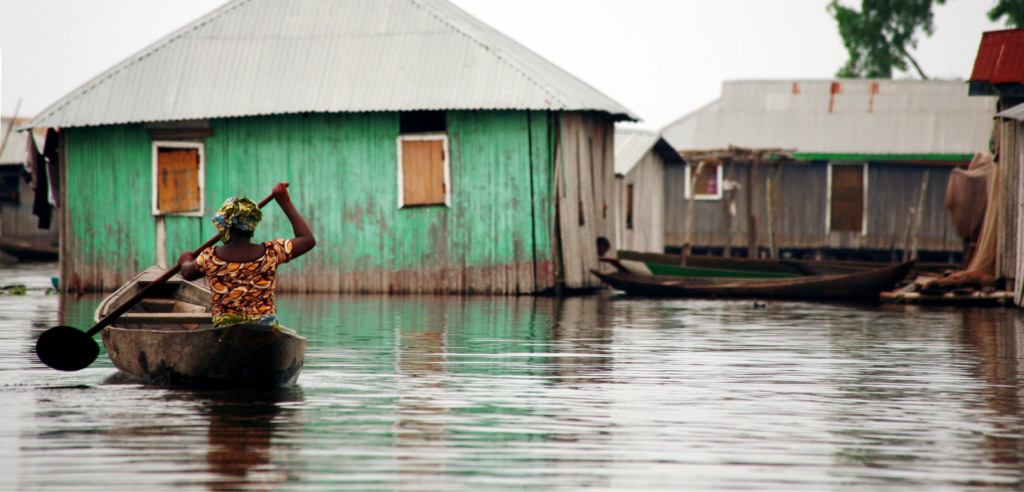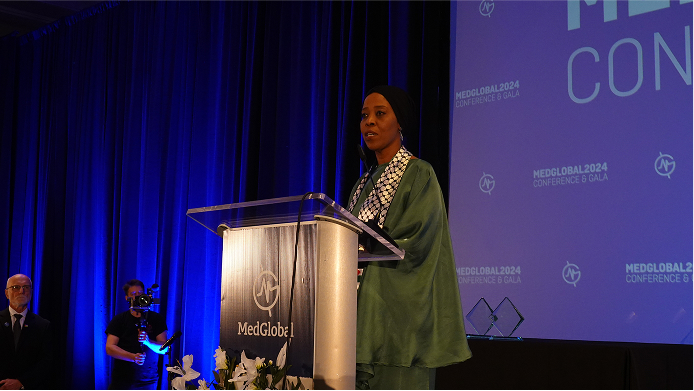Updates & Press
Featured | April 22, 2021
Climate Change is a Public Health Emergency
Author | MedGlobalComms

By Andrew Moran, MedGlobal Policy & Advocacy Intern
Earth Day 2021 marks the 51st anniversary of the modern environmental movement, a movement that now spans the globe with more than one billion people participating each year. Addressing the continued destruction of the environment and the rapidly changing climate have never been more critical. In every country MedGlobal operates, we see the devastating impact of a warming globe. The populations we serve are increasingly victims of extreme weather events, face food and water insecurity, and suffer from outbreaks of disease, all of which can be linked to climate change. While the shifting climate poses a risk to all people, the threat to displaced persons and other vulnerable groups is often existential.
Climate change has already created and exacerbated massive humanitarian crises around the world. MedGlobal’s field teams in Bangladesh, Yemen, and Sudan are increasingly forced to manage the challenges of widespread, climate-linked flooding. In MedGlobal’s report on the Rohingya refugee crisis in Bangladesh In the Eye of the Cyclone, our team warns that the nearly one million refugees in Cox’s Bazar live in low-lying areas that are prone to flooding and mudslides. In Yemen, where violence and multiple crises have left 80% of the population in need of humanitarian aid, more than 300,000 people lost their homes due to flooding last year. This last year, Sudan saw record-breaking floods. MedGlobal’s Sudan Program Manager Abduelsamad Abdalla Ahmed reported on the widespread flooding that left half a million people homeless, saying:
“The floods in Sudan are the worst they’ve been in thirty years. Not only are the floods displacing and killing people, but we are very worried about an outbreak of diseases. The situation is out of control.”
In addition to the immediate effects of climate change, the long-term impact of the warming globe may drastically reduce habitability of entire regions, causing unprecedented global displacement. As climate change continues to worsen, more intense storm seasons are predicted to make once-in-a-century flooding ten times more common. In the next decade, rising temperatures are also expected to cause a 5% drop in global crop yields, pushing 100 million into poverty. Within the next 80 years, tropical areas and parts of the Middle East may become completely uninhabitable during summer months. Millions of people have already become climate refugees and it is estimated that by 2050, more than one billion people will suffer displacement due to these pressures.
Another critical element of climate change that directly impacts health systems, it contributes to the outbreak of deadly diseases. Several diseases, including cholera, dengue fever, chikungunya, Zika virus, and West Nile virus, are expected to worsen due to climate change. For certain disease vectors, such as mosquitos, increased flooding leads to population growth and rising temperatures allows them to expand their range. This means that communities already battling the diseases face more severe outbreaks and some diseases may spread to new areas where local health systems lack experience managing them. For diseases like malaria, warmer temperatures also increase the rate of reproduction for the disease causing parasite, making it more transmissible.
Since 2017, massive flooding in Yemen has contributed to over 2.1 million cases of cholera. Dr. Nahla Arishi, a pediatrician in Aden, noted in MedGlobal’s report A Tipping Point for Yemen’s Health System that flooding has hindered the COVID-19 response as many Yemenis misdiagnose their coronavirus symptoms as flood-related diseases. As Yemen approaches the beginning of its rainy season, new cases of cholera have already emerged and a new outbreak may occur.
The emergence of new diseases is another major issue that environmental destruction has accelerated. 2020 saw a sharp increase in deforestation, partially due to fires in the Amazon that were fueled by the worst droughts in 40 years. In addition to contributing to climate change, the destruction of habitat forces wild animals into closer contact with domesticated animals and humans. The increased interaction creates opportunities for diseases to jump from one species to another. According to USAID, up to 75% of all emerging and re-emerging diseases that affect humans originated in animals. Unless steps are taken to reduce habitat destruction, the frequency of new diseases may increase and catastrophic pandemics like COVID-19 may become much more common.
While the world grapples with solutions to the environmental crisis, low- and middle-income countries continue to pay the greatest cost. Many of these countries have been the first to experience climate-linked emergencies and lack the resources, infrastructure, and health systems to adequately respond to them. As the needs of citizens are prioritized, the needs of refugees and migrants are often neglected or ignored. In these settings, MedGlobal engages with the worst humanitarian crises to address disparities in healthcare access. As we continue to meet the challenges of a changing planet, we must continue adapt our operations, invest in climate resistant infrastructure, and develop extensive response networks to ensure long-term, sustainable health services for the most vulnerable populations.


